Progress on Electronic Monitoring in the Western Pacific and steps being taken by Fiji
25 June 2019
Electronic monitoring systems have been used for various purposes on fishing vessels, primarily in developed countries and industrial fleets. In recent years, the interest in electronic monitoring (EM) has increased considerably and there are many who consider that it is time to scale up the use of this technology to monitor fishing activity and compliance.
Since 2015, the Common Oceans ABNJ Tuna Project has explored the use of EM to improve transparency as a way to combat and reduce illegal, unregulated and unreported fishing. This was tested successfully through pilot activities in Fiji and Ghana, where EM was demonstrated as an effective tool for monitoring, control and surveillance. The purpose of these activities has been to strengthen the capability of flag states to monitor the activities of their vessels using EM to provide a way to obtain independently verifiable information on compliance of tuna fishing vessels.
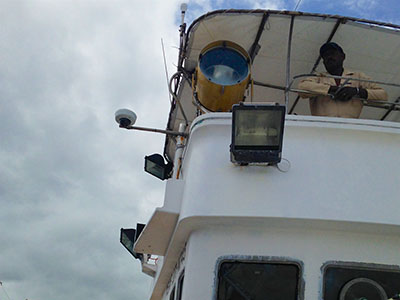 |
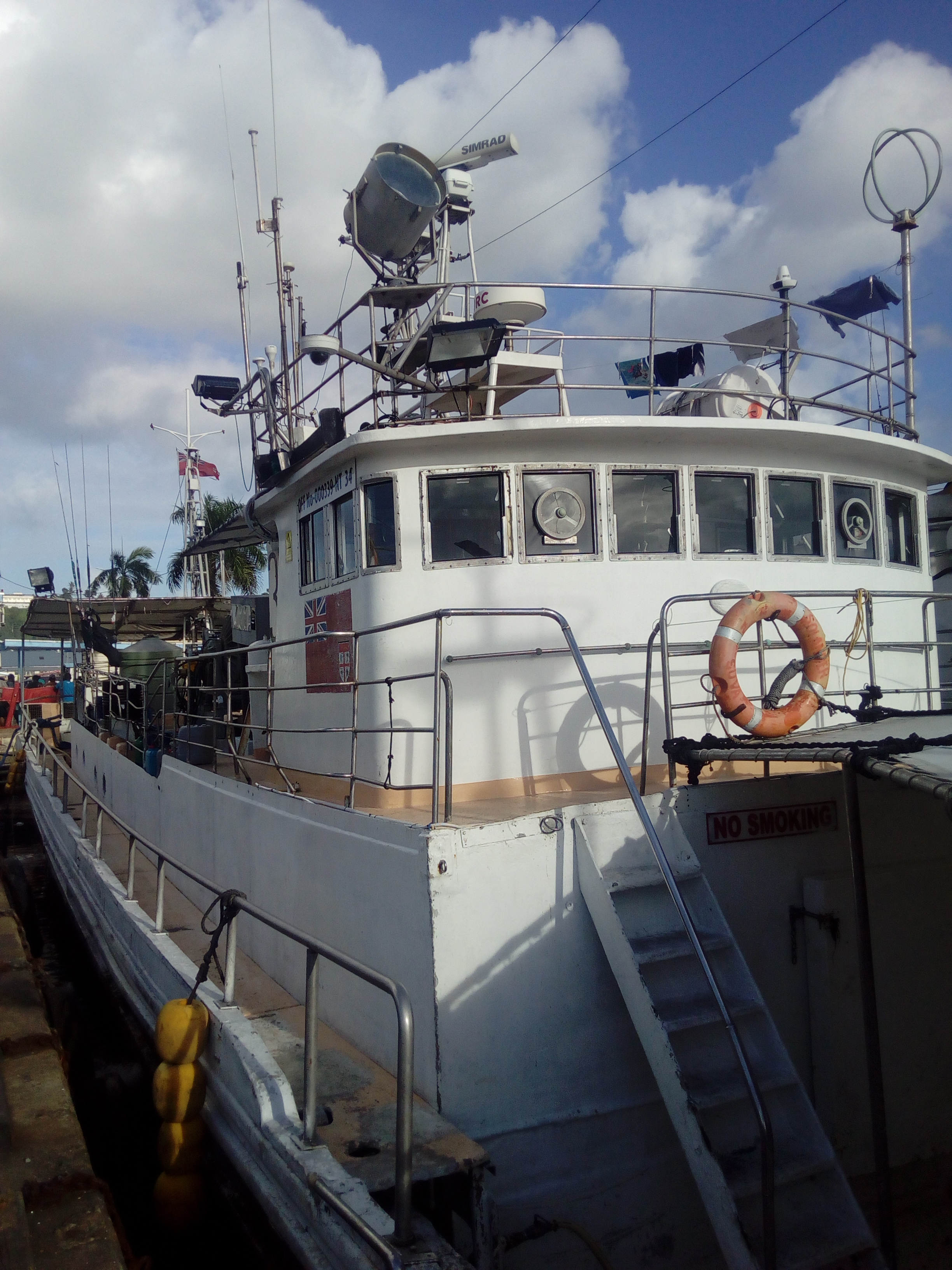 |
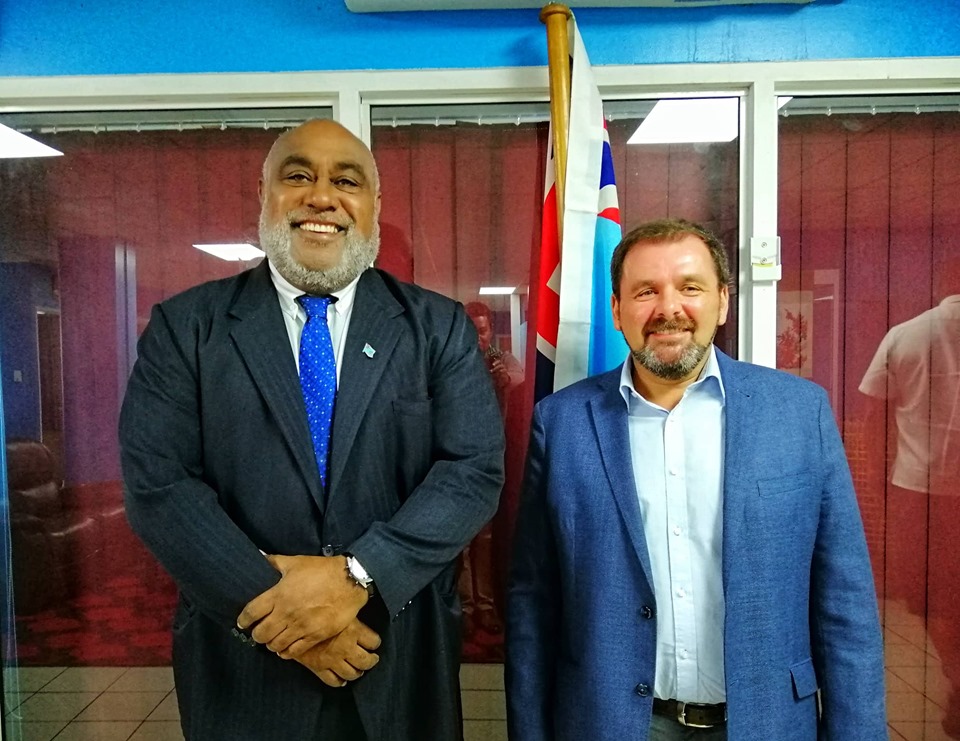 |
| Fijian longline vessels equipped with EMS equipment. © Netani Tavaga |
Minister of Fisheries in Fiji, Semi Kroilavesau, with Kim Stobberup from FAO. © Ministry of Fisheries, Fiji |
In the context of Fiji and the Western and Central Pacific Ocean, many activities have been carried out over the last year to promote electronic monitoring in tuna fisheries. The Electronic-reporting and Electronic-monitoring Working Groups, established under the Western and Central Pacific Fisheries Commission, continued their efforts and the most recent meeting took place in August 2018. This is part of an ongoing process to form the basis of a Commission-level EM Programme built around minimum standards that would apply at both national and sub-regional level. Also, the Parties of the Nauru Agreement (PNA) – an organization of eight Pacific Island countries that control the world’s largest fishery for skipjack tuna – made a decision to establish an EM Program covering tuna longliners in July 2018, and this is currently under development.
In October 2018, the President Peter Christian of Federated States of Micronesia (FSM) announced his country’s commitment to full tuna fisheries transparency by 2023 through a combination of state-of-the-art EM and human observer coverage in all industrial fishing vessels operating in its territorial waters. The President also challenged other PNA members to meet this same goal under the “Technology for Tuna Transparency (T-3) Challenge".
To promote the T-3 challenge, an Electronic Monitoring Symposium “Technology for Tuna Transparency” was held on 10-12 April 2019 in Pohnpei, FSM, sponsored by the FSM Government, the Nature Conservancy, the Forum Fisheries Agency, and PNA. The symposium explored how EM fits into control and surveillance to support sustainable fisheries, how it is presently being used in the Western and Central Pacific, its potential in the seafood supply chain, how to scale EM for increased use in the FSM and the Pacific, and moving forward with a regional vision for more transparency in tuna fisheries.
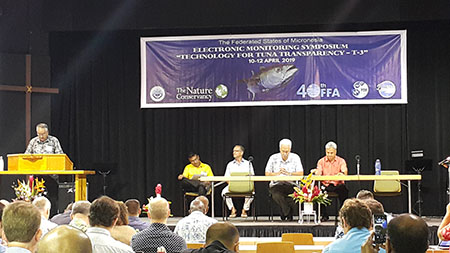 |
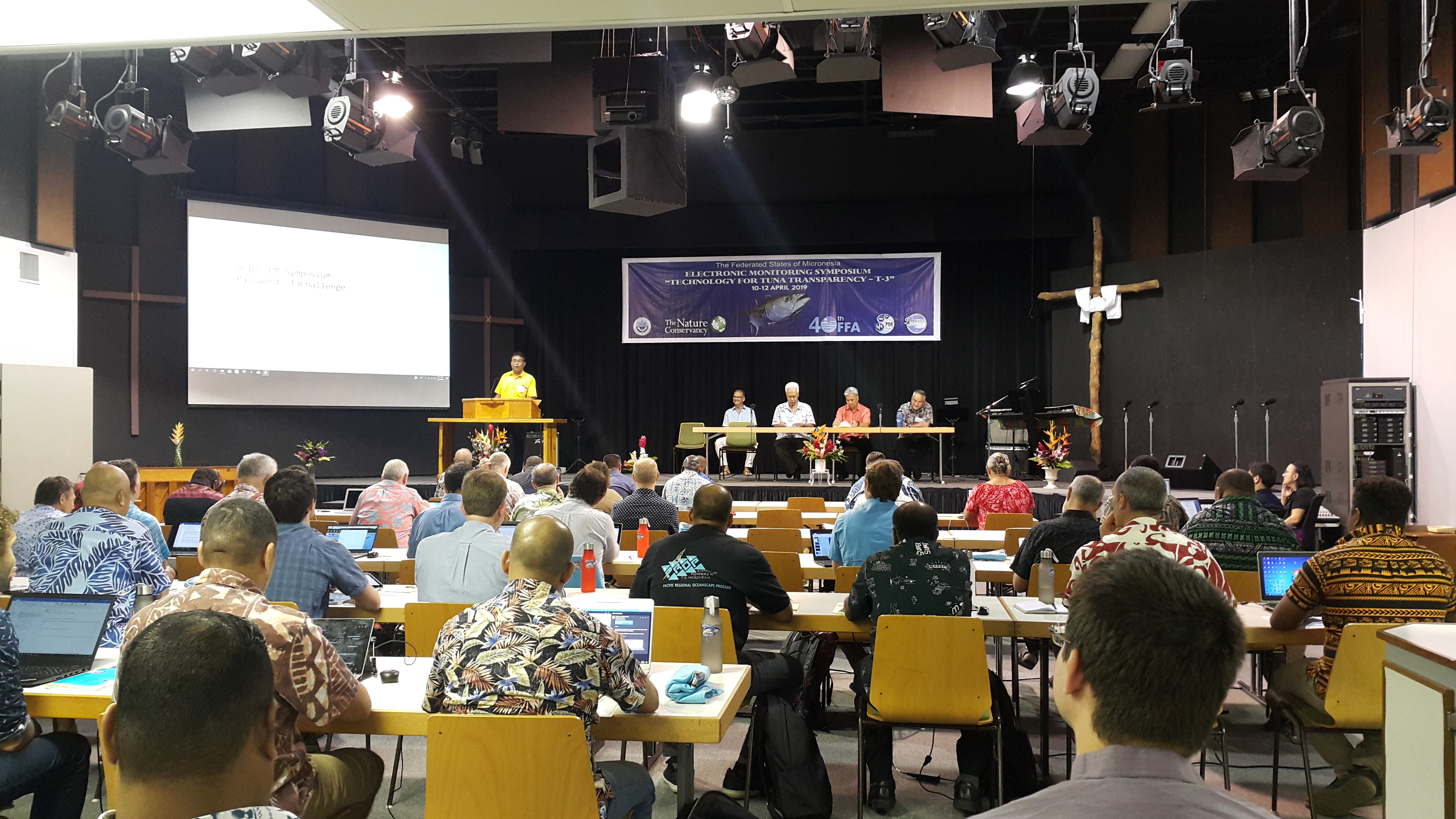 |
| The Electronic Monitoring Symposium "Technology for Tuna Transparency" in Pohnpei on 10-12 April 2019. © Netani Tavaga |
The Common Oceans ABNJ Tuna Project was represented at the symposium by Netani Tavaga, the Coordinator of the EM Pilot in Fiji, who presented the lessons learned and experiences gained in the Fijian tuna longline fleet Fisheries that has 50 vessels equipped with EM. This started in 2015 through a partnership between the Government of Fiji, the Fiji Fishing Industry Association (FFIA), and the Food and Agriculture Organization of the United Nations (FAO), with a primary focus on monitoring the activities of tuna longliners in the Fijian EEZ. EM has been used successfully to monitor compliance with national and regional regulations, as well as the collection of better data for scientific purposes. The trial has provided Fiji with valuable experience on how to maintain a larger scale national electronic monitoring program functioning successfully and there is general recognition of this in the region.
To assist the Fiji Government, the Common Oceans ABNJ Tuna Project supported research and development of a Business Case for Electronic Monitoring in the Fijian tuna longline fleet. This included a comprehensive assessment of the costs and benefits of implementing routinely EM technologies in Fiji, and to propose cost-recovery scenarios to sustainably use EM as a tool for monitoring, control and surveillance and data collection beyond the Project (expected to end in mid-2019). The results of this Business Case were presented at the T3 Symposium, which generated much interest.
In summary, it is evident that efforts to scale up the use of electronic monitoring in tuna fisheries operating in the Western and Central Pacific is gaining momentum. In Fiji, there is a strong commitment to continue using EM after the end of the Common Oceans ABNJ Tuna Project and Fiji is expected to play a key role in defining its use in the region. FFIA has supported this initiative since the beginning and would like this to continue, but it is important to find a reasonable cost-sharing arrangement with the government for the future.
The Common Oceans ABNJ Tuna Project is funded by the Global Environment Facility, with FAO as the implementing agency. This Project harnesses the efforts of a large and diverse array of partners, including the five tuna regional fishery management organizations, governments, inter-governmental organizations, non-governmental organizations and private sector to achieve responsible, efficient and sustainable tuna production and biodiversity conservation in the areas beyond national jurisdiction.
 |
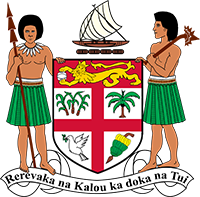
|
For further information, please contact:
Mr Alejandro Anganuzzi, Global Coordinator, Common Oceans ABNJ Tuna Project, FAO | [email protected]
Mr Kim Stobberup, MCS Consultant, Common Oceans ABNJ Tuna Project, FAO | [email protected]

